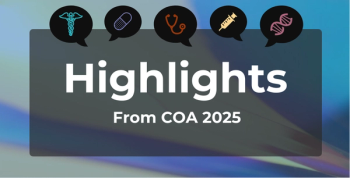
An Update on Lung NET Guidelines
During a session at the North American Neuroendocrine Tumor Society (NANETS) annual meeting, held October 4-6 in Seattle, Washington, Sukhmani Padda, MD, assistant professor of medicine, Stanford University Medical Center, gave an overview of updates made to lung neuroendocrine tumor guidelines.
Despite lung neuroendocrine tumors (NETs) being the most common single organ site of NETs and increasing in both incidence and prevalence, there is limited lung NET-specific data to guide diagnosis and management. As a result, there are challenges remaining in diagnosis and there is a lack of standardization of treatment.
“So, when we have limited data, we look to our best practice consensus guidelines,” said Sukhmani Padda, MD, assistant professor of medicine, Stanford University Medical Center, during a session on updated lung NET guidelines at the North American Neuroendocrine Tumor Society (NANETS) annual meeting, held October 4-6 in Seattle, Washington.
The latest practice consensus on lung NETs was published by the European Neuroendocrine Tumor Society (ENETS) in 20151, which was the result of 2 meetings of the ENETS advisory board in 2012 and 2013 where they reviewed approximately 170 new publications for the updated guidelines.
This year, the Commonwealth Neuroendocrine Tumor Group and NANETS collaborated to consider new and current data to provide updated guidelines for the disease, explained Padda. Using the American Society of Clinical Oncology Guideline Endorsement Content Review Form, the consensus was initially assessed by 2 experts for quality of methods and content.
Subgroups of topic experts then reviewed relevant ENETS statements and new data, using a lung NET-specific focus and patient-centered perspective. Following the review, a 22-member multidisciplinary expert panel met to review each statement along with the level of evidence and grade by Oxford criteria. Padda emphasized the inclusion of patients in the process.
A total of 1109 studies were identified, and 230 were considered included for the update. These included 3 meta-analyses, 2 phase 3 studies, and 11 phase 1, 2, 4, and other prospective trials. “We continue to have a low level of evidence for lung NETs data, so 214 were cohorts and case-controlled studies and case studies,” noted Padda.
The updated guidelines now have 52 statements, 40% of which are endorsed as is from the ENETS consensus, and 50% are modified. While some adjustments are statement refinements, others were practice changing. One statement was deleted and an additional 4 were added.
“This consensus update addresses broad specialties, all the way from epidemiology to treatment and follow up,” said Padda. According to Padda, 1 of the big additions to the guidelines is a whole section on patient-centered care. There is also an additional section identifying future directions for research in lung NETs.
In epidemiology, there was an added statement highlighting markedly increasing incidence and prevalence of lung NETs. In pathology, the update includes the 2015 World Health Organization classification of lung NETs, as well as the 8th edition for lung NET staging.
“In terms of diagnosis, one of the biggest practice-changing statements was that we have indicated limited clinical value of chromogranin A in lung NET diagnosis and disease state characterization,” said Padda. “The reason for this was there was also a meta-analysis showing a relatively low sensitivity of this assay for lung NETs, so that is practice changing.”
In surgery, one of the biggest practice-changing statements was regarding the role for cytoreductive surgery, she said. The update now expands the surgery to include patients with nonaggressive carcinoid tumors.
While the ENETS guidelines had a description regarding antiangiogenics, the update added a statement regarding the lack of data for benefit of antiangiogenics. They also assert that there is no evidence for patients who have undergone a complete surgical resection to receive adjuvant therapy, including patients who have atypical carcinoid with higher mitotic index or Ki-67 index.
The grade of recommendation for mammalian target of rapamycin, or mTOR inhibitors, like everolimus was updated to grade A as a result of positive randomized phase 3 data. The grade of peptide receptor radionuclide therapy was also augmented and is now a grade B due to several cohort studies identifying the potential efficacy for the treatment in lung NETs.
Lastly, Padda highlighted the modifications made to ENETS’ diagnostic algorithm, which she said make the algorithm more linear for providers not familiar with lung NET patients. The modifications also incorporate and highlight the role of SSTR PETd in initial diagnostic workup.
Reference:
1. Caplin M, Baudin E, Ferolla P, et al. Pulmonary neuroendocrine (carcinoid) tumors: European Neuroendocrine Tumor Society expert consensus and recommendations for best practice for typical and atypical pulmonary carcinoids [published online February 2, 2015]. Ann Oncol. doi: 10.1093/annonc/mdv041.
Newsletter
Stay ahead of policy, cost, and value—subscribe to AJMC for expert insights at the intersection of clinical care and health economics.








